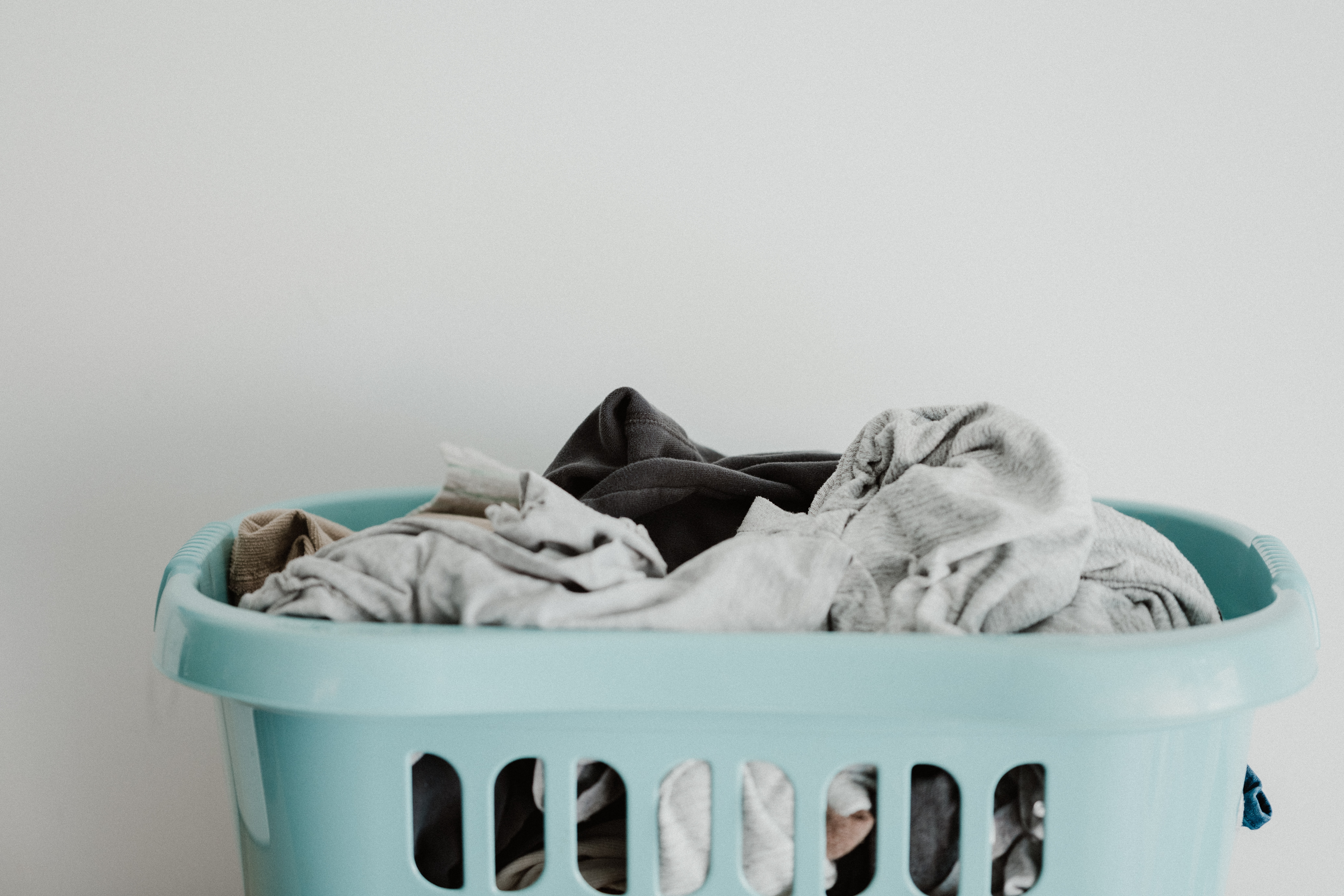Budget, design, and functionality are key when renovating your laundry room. The outcome will significantly affect professional renovation costs, appliance prices, and material choices.
Proper planning is important whether hiring experts or doing it yourself. Focusing on financing, local regulations, and hiring the right tradespeople can ensure a smooth renovation process.
Thoughtful design will help transform the space into a functional and stylish area suited to your needs.
Let’s get straight to the point.
Renovating your laundry room involves professional costs, appliance expenses, and material choices. Standard renovations cost around $17,500, while luxury upgrades cost $19,000.
Major appliance costs include washers, dryers, and sinks, ranging from $500 to $2,000 each. Materials like benchtops and flooring vary significantly in price based on quality.
Budgeting for labour, permits, and financing options is essential, and hiring the right tradespeople ensures safety and compliance. Effective design and layout choices, such as L-shaped setups and drying areas, can optimise functionality and enhance the room’s aesthetic appeal.
Professional Renovation Costs
Hiring professionals for your laundry room renovation can significantly increase the overall cost, but it often results in higher quality and time savings.
Key Points:
- Standard Renovation: Costs around $17,500, including both materials and labour.
- Luxury Renovation: This can rise to $19,000 due to premium materials and custom features.
- Trades Involved: Plumbers, electricians, tilers, carpenters, and more, each charging specific hourly or project rates.
Appliance Costs
When renovating, appliance expenses play a major role in your budget. It’s important to factor these in based on your needs and space.
Common Appliance Costs:
- Dryer: Ranges between $500 and $2,000, depending on the brand and features.
- Exhaust Fan: Typically $30 to $80 for basic models.
- Tapware: Costs about $50 to $100 for standard designs.
- Sink: Prices range from $100 to $500, depending on size and material.
- Washer/Dryer Combo: Ideal for limited space, usually priced between $500 and $2,000.
Material Costs
The choice of materials can dramatically impact your renovation budget. Knowing typical prices helps in making informed decisions.
Typical Material Prices:
- Benchtops: Laminate costs around $120 to $350 per square meter, while natural stone ranges from $800 to $2,200.
- Flooring: Standard ceramic tiles cost $35 to $50 per square meter, while high-end natural stone can exceed $100 per square meter.
- Basin: Standard models range from $100 to $500, with custom designs costing more.
- Exhaust Fans: Basic units cost around $30 to $150, depending on brand and performance features.
Manpower Cost
- Permits: Between $500 and $2,000.
- Carpenter: $40-$80 per hour.
- Plumber: $100-$150 per hour.
- Painter: $12-$30 per square metre.
- Tiler: $46-$150 per square metre.
Each area—professional labour, appliances, and materials—contributes to your laundry room renovation’s overall cost and quality. Balancing them within your budget is key to achieving the best outcome.
Financing Your Renovation
Before embarking on your laundry room renovation, it’s essential to determine how you will finance the project. Various options are available depending on your financial situation, and making an informed choice ensures you stay within your budget.
Financing Options
- Out-of-Pocket: If you have sufficient savings, you can pay for the renovation directly through your savings or an offset account on your mortgage. This is a cost-effective approach as it avoids the interest associated with loans, but it requires having readily available funds.
- Refinancing: Adjusting your current mortgage is another way to access the necessary funds. Refinancing may increase your mortgage balance but can provide extra money at a lower interest rate than other loan types.
- New Loans: Depending on the scale of your renovation, personal loans or construction loans may be suitable. Personal loans offer quick access to funds for smaller projects but usually have higher interest rates. On the other hand, construction loans are ideal for extensive renovations, offering tailored repayment schedules as your project progresses.

Timeline And Planning
A well-organised renovation requires meticulous planning and adherence to local regulations. Ensuring compliance with council requirements, insurance policies, and safety measures is crucial for a smooth process.
Steps To Follow
- Check Local Regulations: Before construction begins, consult your local council to determine whether you need permits. Certain permits may be required for structural changes or plumbing work, depending on your area and the nature of your project.
- Insurance: It’s vital to review your home insurance policy to ensure that any renovation work is covered. While smaller changes may not require notification, major structural or electrical modifications might impact your coverage, and you don’t want to be caught unprotected.
- Material Testing: For homes built before the 1980s, testing for hazardous materials such as asbestos or lead is crucial. Professionals must handle and remove these materials, ensuring safety and compliance with legal regulations.
- Structural Testing: If you plan to modify or remove any walls, consult a structural engineer or builder to ensure the walls are not load-bearing. Mistakes here can lead to significant structural issues or even collapse.
- Notify Neighbours: If you live in a shared building or apartment complex, it’s essential to notify your neighbours of any upcoming renovation work. It is courteous, and some properties may have strict requirements for informing residents about noise or disruption.
Tradespeople You May Need
Renovating a laundry room often involves more than just cosmetic updates. Depending on the extent of your project, you might need to hire various specialists to ensure everything is done correctly, safely, and in compliance with local regulations.
Key Tradespeople
- Lead and Asbestos Removalist: If your home was built before the 1980s, harmful materials like lead or asbestos may be present. Hiring a licensed removalist is essential to safely test, remove, and dispose of these hazardous materials, following all safety standards and regulations.
- Structural Tester: If you plan to alter or remove walls, you’ll need a structural engineer or building professional to assess whether the walls are load-bearing. This step is vital to avoid compromising the integrity of your home’s structure.
- Plumber and Electrician: Plumbing and electrical work are often required in a laundry renovation, especially if you are moving appliances, adding sinks, or upgrading wiring for newer machines. A licensed plumber can install water lines and drains, while an electrician ensures that outlets, lighting, and wiring are up to code and safely installed.
- Carpenter: Custom cabinetry, shelving, and bench space are often the key features of a functional laundry room. A skilled carpenter can install cabinetry and countertops tailored to your space, maximising storage and utility.
- Painter: A fresh coat of paint can breathe new life into any room. A professional painter will ensure that walls, ceilings, and doors are finished neatly and correctly. Choosing moisture-resistant paint is crucial for laundry rooms to handle damp conditions.
- Tiler: Tiles are popular for laundry room floors and walls due to their durability and water resistance. A qualified tiler can expertly lay tiles to create a waterproof and aesthetically pleasing finish. The installation must be precise to ensure longevity, whether you choose ceramic, stone, or vinyl tiles.
Designing Your Laundry Room
A well-planned layout is essential for a functional and efficient laundry room. Choosing the right layout can help streamline your laundry tasks and optimise available space, whether you’re working with a small or large space.
Recommended Layouts
- L-Shaped Design: This layout places the washer, dryer, and cabinetry along two walls, creating an efficient workflow and maximising counter space.
- Drying Area: Installing clothes rails for drying can be a practical alternative to using a dryer for delicate items or during wet weather.
- Baskets: Incorporating dirty laundry baskets into your laundry room design frees other areas of your home from clutter. Having designated baskets for sorting by colour or fabric type can also simplify the washing process.
Ideas For Designing Your Laundry Room
When designing your laundry room, focus on both functionality and aesthetics. A cohesive design that reflects your style can make laundry tasks more enjoyable.
Design Tips
- Benches for Sorting and Folding: Ensure your countertops or benches are large enough to accommodate laundry baskets. Having enough space to fold clothes straight from the dryer saves time and makes the process more efficient.
- Hanging Rods: Install hanging rods above the benches or along a wall for items that need to air dry or hang straight from the dryer. This is especially useful for shirts, jackets, or delicate garments.
- Wall-Mounted Appliances: In smaller laundry rooms, wall-mounted appliances can free up valuable floor space. This arrangement is especially helpful in compact flats or homes with limited space.
- Concealed Laundry Area: If your laundry room is in a multi-purpose space, such as a kitchen or hallway, consider using doors to conceal the area when not in use. Sliding doors or folding panels can hide the appliances and keep your home looking neat.
Conclusion
Renovating your laundry room can enhance both its functionality and appearance. By understanding the costs, planning your budget, and considering professional help, you can create a space that meets your needs. Whether you DIY or hire tradespeople, a well-organised and thoughtfully designed laundry room can transform how you manage laundry chores.
FAQs About Laundry
Can You Wash Clothes Without Detergent?
Use Laundry Borax or Baking Soda
If you have no detergent at all, use one cup of borax or baking soda for a normal load. The clothing will be cleaner than you imagine thanks to the action of the cleaning agents, water, and the agitation from the washer.
Do You Really Need Fabric Conditioner?
Absolutely! Using fabric softener in your wash is an effective way to reduce wrinkles, prevent static build-up, make your clothes feel softer, and leave them smelling fresh. A fabric softener can also extend your clothes’ life by preventing ‘cling’ caused by static electricity and avoiding wear and tear.
Do You Add Detergent Before Or After Clothes?
If you have a regular top-loading machine, it’s best to fill your washer with water first, then add your detergent, then add your clothes. This helps evenly distribute the detergent in the water before it hits your clothes. Remember that the nicer you are to your washer and dryer the longer they’ll last.
Can I Wash My Clothes Twice In A Row?
If your clothes are really dirty, it stands to reason that you’ll need extra laundry detergent. Wrong! It’s better to wash a load twice in a row with a normal amount of detergent than load up on extra detergent. Many machines have a prewash setting that can be used as well.
How Does Detergent Clean Clothes?
Detergents and other cleaning products contain surfactants, which are molecules that improve the mixing between water and other substances, such as oil or grease. The surfactant allows water to penetrate into a stain and lift the dirt particles off the fabric; the rinse then sweeps the dirt away.


